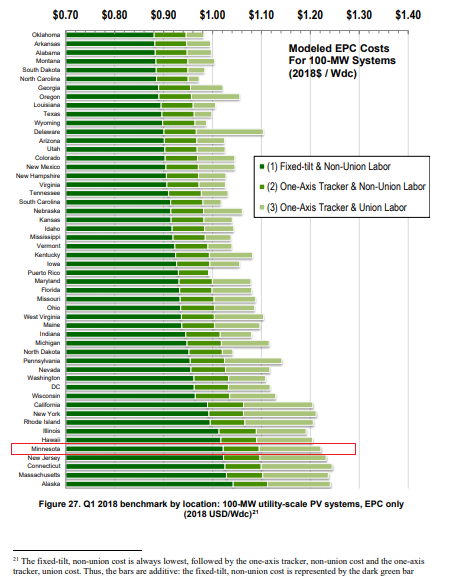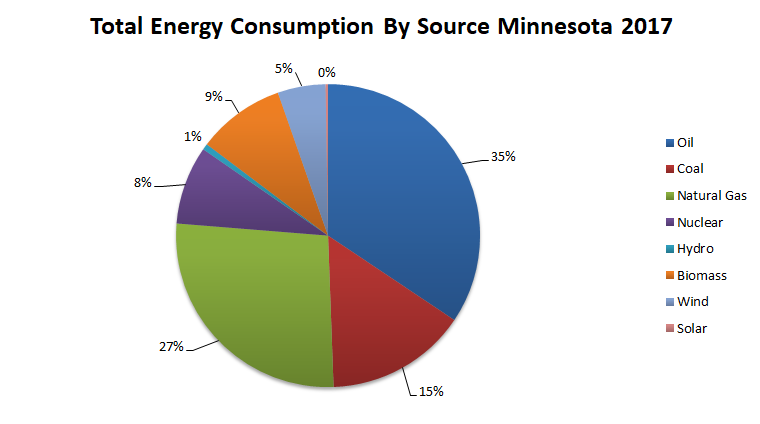MN Green New Deal, or Green Leap Forward? HF 2836 is the Latest in Minnesota’s Green New Deal Saga
How many versions of a Minnesota Green New Deal (GND) will DFL lawmakers in the House of Representatives introduce before the end of the legislative session? Thus far at least three different versions have been introduced, each seemingly more energy illiterate than the last.
HF 2836 lives up to this standard, and then says “hold my beer.”
100 percent “carbon free” by 2030 without allowing large hydro or lifting the ban on new nuclear power plants
“By 2030, 100 percent of the electricity each electric utility subject to subdivision 2a provides directly to Minnesota retail customers, or indirectly provides through wholesale sales to a distribution utility serving Minnesota retail customers, must be generated by a technology that is carbon-free.”
I feel like I’m in the movie Groundhog Day, seeing the same bill day after day with it getting successively worse. This bill still refuses to let large hydro count for the standard and does nothing to legalize new nuclear power. A 100 percent renewable energy mandate by 2050 is probably not possible, and definitely isn’t affordable, but a 2030 deadline for 100 percent renewable would be even less realistic.
Just 24 hours of battery storage would cost Minnesota at least $133 billion, based on the Tesla battery that was installed in South Australia two years ago. An engineer I spoke to recently said Minnesota would need something along the lines of 700 hours of battery storage to integrate higher levels of intermittent renewable energy onto the grid. This would cost $3.78 trillion at today’s costs or “only” $1.26 trillion if we assume batteries cost a third less than they do today.
Union Labor
This is where things start to get different. This legislation wants to maximize local employment and encourage worked to be unionized.
“Local benefits. (a) The commission shall take all reasonable actions within its statutory authority to ensure this section is implemented to maximize in a manner that maximizes benefits to all Minnesota citizens, balancing throughout Minnesota. Benefits under this subdivision include but are not limited to: (1) the creation of high-quality jobs in Minnesota that pay wages that support families; (2) recognition of the rights of workers to organize and unionize; (3) ensuring workers have the necessary tools, opportunities, and economic assistance to adapt successfully during the energy transition, particularly in communities that host retiring power plants or that contain historically marginalized and underrepresented populations;”
There are two problems with this: 1) Wind turbines are increasingly being built in North Dakota, rather than Minnesota, because it’s windier there. 2) Unionized labor drives up the cost of solar panels, as shown in the graph below from Lawrence Berkeley National Labs. Interestingly, it is more expensive to build solar in Minnesota than it is to build it in 45 other states. I assume these large costs are driven by Community Solar installations that are not able to take advantage of economies of scale.

Either way, unionized labor increases the cost of solar, but it doesn’t appear cost is really of concern to these legislators.
Fossil Fuel Construction Moratorium
This section was actually alarming and worth reading the actual text.
“A state agency is prohibited from issuing a permit to construct (1) a facility to transport, store, or process coal, crude oil or its derivative products, propane, or natural gas, or (2) a facility defined in section 216B.2421, subdivision 2, clause (9), pending issuance of the report required under section 11.”
I’m not sure if this would prohibit new gas stations or new natural gas lines for houses, but it is definitely aimed at stopping pipeline projects like Line 3. Either way, this is astounding.
Oil accounted for 35 percent of our total energy consumption in 2017, natural gas accounted for 26 percent, and coal accounted for 15 percent. Nuclear accounted for 8 percent, wind for 5 percent, and solar accounted for less than one percent. A moratorium on new fossil fuel infrastructure would outlaw 77 percent of all the energy used in Minnesota.

It’s pretty amazing that lawmakers are willing to put their names on legislation that essentially outlaws the way people heat their homes and drive their kids to school. During the Polar Vortex at the end of January, wind energy provided just 4 percent of the electricity and utilized just 24 percent of its installed capacity in a region monitored by the Midcontinent Independent Systems Operator (MISO), a not-for-profit organization that ensures reliable, least-cost delivery of electricity across all or parts of 15 U.S. states, including Minnesota.
Meanwhile, coal-fired power plants provided 45 percent of MISO’s power and nuclear provided 13 percent came from nuclear, natural gas provided 26 percent of our electricity use at that time, and the remainder was imported from Canada and other U.S. states.
This proposal is so bad it’s impossible to take it seriously. The negative impacts of living without fossil fuels would make global warming look like a walk in the park. There’s a reason why none of us want to live like it’s Little House on the Prairie, life was nasty, brutish, and short.